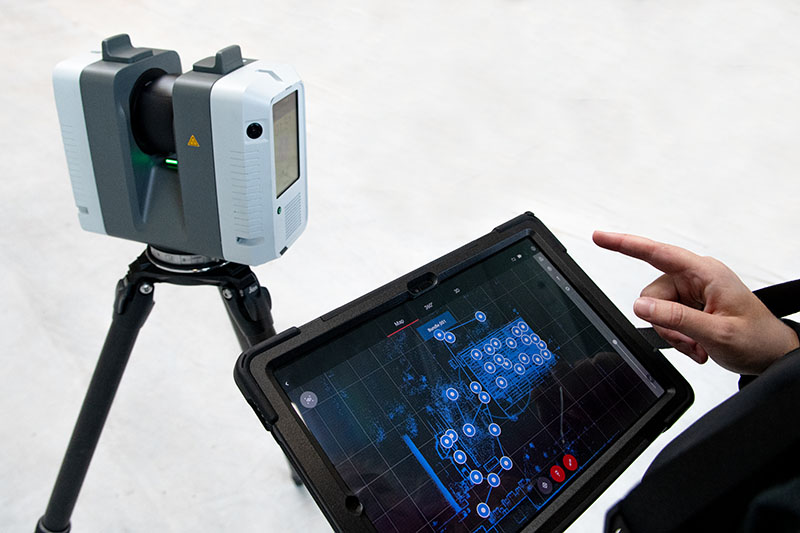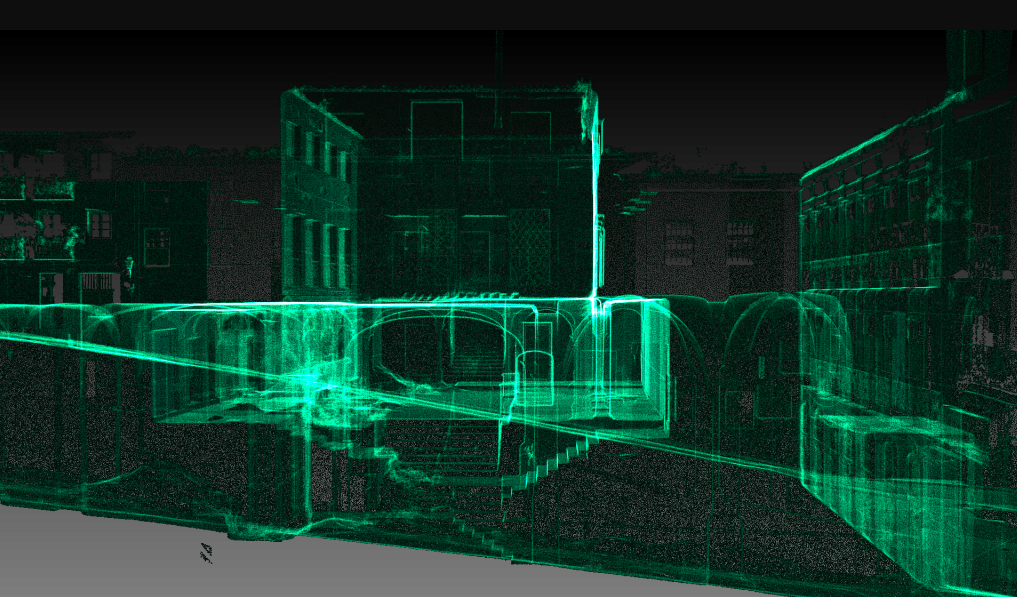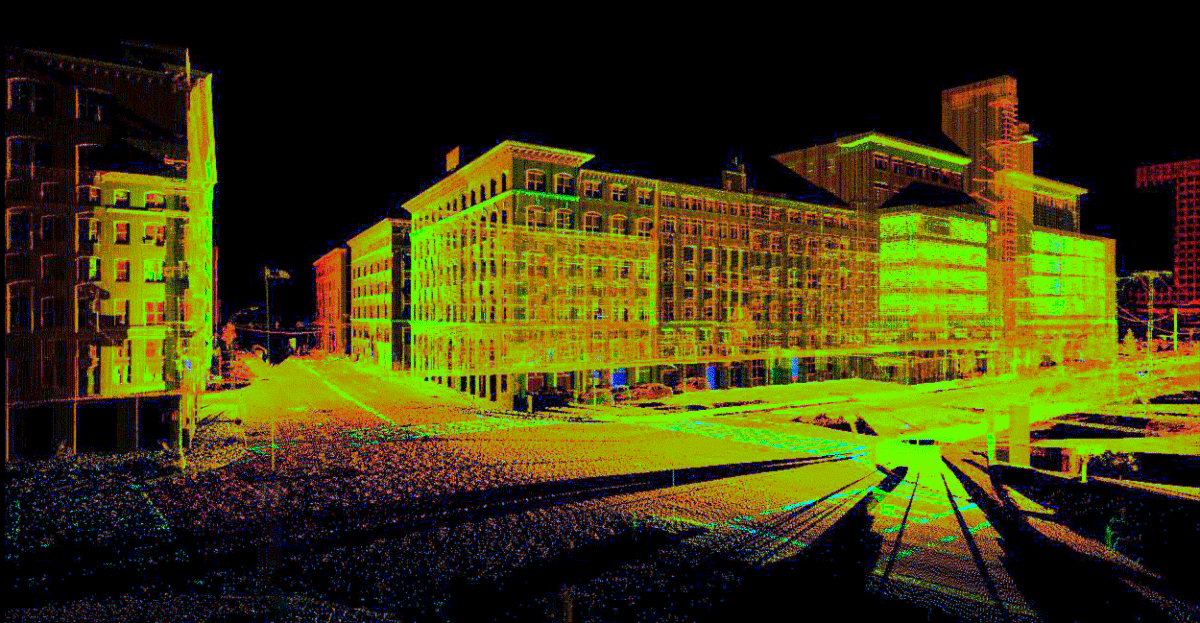Exactly How 3D Laser Scanning Reinvents Architectural Style and Building And Construction Projects
3D laser scanning is transforming the landscape of building layout and construction. This technology provides unparalleled accuracy in recording existing atmospheres, which assists in far better task preparation and implementation. It reduces errors while boosting effectiveness in different stages of advancement. The implications for partnership amongst engineers, engineers, and other stakeholders are considerable. These innovations open the door to new style opportunities and cutting-edge remedies. What exists ahead for this developing innovation?
The Basics of 3D Laser Scanning Innovation
3D laser scanning technology may appear facility, its core principles are straightforward and transformative for building style. This innovation employs laser beam of lights to catch accurate measurements of physical structures, generating a comprehensive point cloud that represents the scanned setting. A laser scanner emits rapid pulses of light, gauging the moment it takes for the light to return, which enables the estimation of ranges with amazing accuracy.
The resulting point cloud can be exchanged a 3D version, offering architects with important visual information. This version allows professionals to analyze and control layout aspects within their projects, allowing for cutting-edge options and improved visualization. By employing 3D laser scanning, designers can better understand the status quo of a site, ensuring that brand-new designs integrate with their surroundings. This assimilation of innovation into building design notes a substantial improvement, fostering creative thinking and precision in the area.

Enhancing Accuracy and Effectiveness in Architectural Projects
As building tasks significantly demand precision and speed, 3D laser scanning emerges as an essential device in enhancing both accuracy and effectiveness. This modern technology captures countless information points in a short duration, developing in-depth and exact 3D models of existing structures. The ability to obtain precise dimensions reduces the risk of errors during the layout phase, allowing architects to envision their jobs with exceptional clarity.
The fast data collection procedure decreases the time invested on-site, enabling groups to concentrate on analysis and design renovations. With real-time information accessibility, modifications can be made swiftly, promoting an extra structured process. The integration of 3D laser scanning into building methods not only improves dimension precision however also improves the overall task timeline, promoting quicker decision-making. In a market where precision is essential, this innovation stands as a transformative force, boosting the requirements of architectural style and construction tasks.
Improving Collaboration Amongst Stakeholders
While standard architectural processes usually include fragmented interaction among stakeholders, 3D laser scanning fosters a much more cohesive collective setting. By providing exact, high-resolution data, this modern technology allows designers, engineers, clients, and professionals to run from a unified factor of reference. The in-depth visualizations created through laser scanning remove obscurities and misconceptions, making sure that all events have access to the same info.
This openness enhances decision-making and motivates prompt responses, as stakeholders can easily imagine layout elements and spatial partnerships. Furthermore, the assimilation of 3D scanning data into Structure Details Modeling (BIM) systems even more streamlines partnership, enabling real-time updates and adjustments. Such seamless communication not just lessens conflicts but likewise speeds up project timelines, as all stakeholders continue to be lined up throughout the design and building stages. Eventually, 3D laser scanning changes typical workflows into a more efficient and joint procedure, benefiting all parties entailed.
Opening Imaginative Opportunities in Layout
By enabling architects to picture complicated complex information and spatial relationships, 3D laser scanning discloses imaginative possibilities in layout. This technology enables for accurate mapping of existing environments, enabling engineers to check out innovative principles that might have formerly appeared impractical. With very precise information, developers can trying out non-traditional forms and materials, pressing the borders of typical architecture.
The integration of 3D laser scanning right into the layout process promotes collaboration among multidisciplinary groups, motivating the exchange of ideas and boosting creative thinking. The thorough visualizations produced by this innovation not just help in determining possible style obstacles however likewise influence options that may not have been considered. Therefore, engineers can produce much more appealing and vibrant areas that reverberate with customers while fulfilling functional demands. Inevitably, 3D learn the facts here now laser scanning transforms the building landscape, encouraging developers to recognize their visions with unmatched accuracy and creative thinking.
The Future of 3D Laser Scanning in Architecture and Construction
The combination of 3D laser scanning right into architectural layout not just enhances creativity yet additionally establishes the phase for its evolving function in the future of architecture and building and construction. As modern technology developments, the precision and efficiency of laser scanning will certainly remain to improve, making it possible for engineers and contractors to develop a lot more complex designs with accuracy - 3D Scanning. The usage of this technology in real-time information collection will assist in far better decision-making, decreasing errors and enhancing process
Future applications may include augmented and digital reality integrations, allowing stakeholders to envision tasks in immersive settings. In enhancement, as sustainability ends up being a priority, 3D laser scanning will sustain the growth of energy-efficient layouts by providing comprehensive insights into existing structures. As collaboration among numerous disciplines ends up being more important, the capability to share exact 3D designs will certainly foster advancement and boost project end results. Ultimately, 3D laser scanning will certainly redefine standards in architectural style and building practices.
Regularly Asked Inquiries
What Is the Expense of Executing 3D Laser Scanning Innovation?

How Long Does a Typical 3D Laser Scanning Job Take?
A common 3D laser scanning job can take anywhere from a few hours to numerous days, relying on factors such as the task's dimension, intricacy, and the degree of information required for precise data capture.
What Sorts Of Projects Benefit Many From 3D Laser Scanning?
3D laser scanning advantages various jobs, specifically large building and constructions, historic remediations, and complex remodellings. It enhances precision in dimensions, decreases mistakes, and gives detailed information vital for efficient preparation and execution in architectural layout and building.

Are There Particular Software Application Programs Required for 3D Laser Scans?
Yes, see this certain software application programs are necessary for processing 3D laser scans. 3D Scanning. Popular options Discover More include Autodesk ReCap, Faro Scene, and Leica Cyclone, each offering distinct functions customized for picturing and assessing checked information properly in various jobs
Exactly How Does 3D Laser Scanning Effect Environmental Sustainability in Building And Construction?
3D laser scanning boosts ecological sustainability in construction by minimizing material waste, making it possible for specific dimensions, and promoting efficient resource usage. This modern technology permits better planning, reducing the ecological impact of building and construction tasks via boosted precision and effectiveness.
3D laser scanning is transforming the landscape of architectural design and building and construction. 3D laser scanning modern technology might seem complex, its core principles are simple and transformative for building style. By enabling designers to imagine complex elaborate details and spatial partnerships, 3D laser scanning exposes innovative opportunities in design. The integration of 3D laser scanning right into the design procedure promotes partnership among multidisciplinary groups, motivating the exchange of ideas and boosting creativity. The assimilation of 3D laser scanning right into building style not just enhances creative thinking however also establishes the phase for its advancing function in the future of architecture and building and construction.